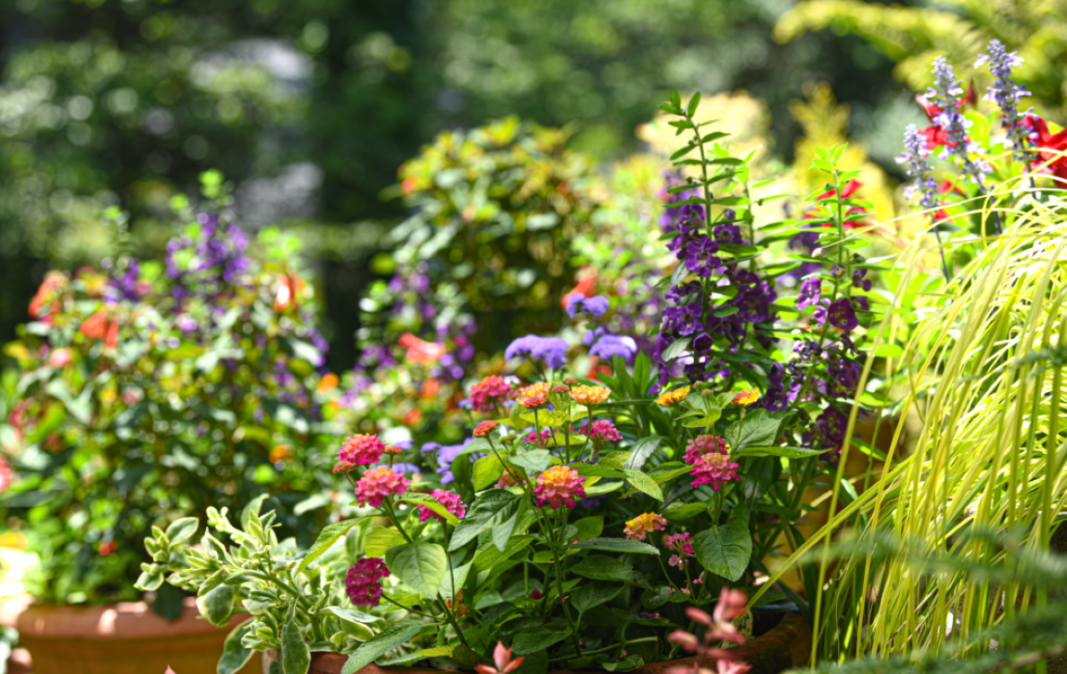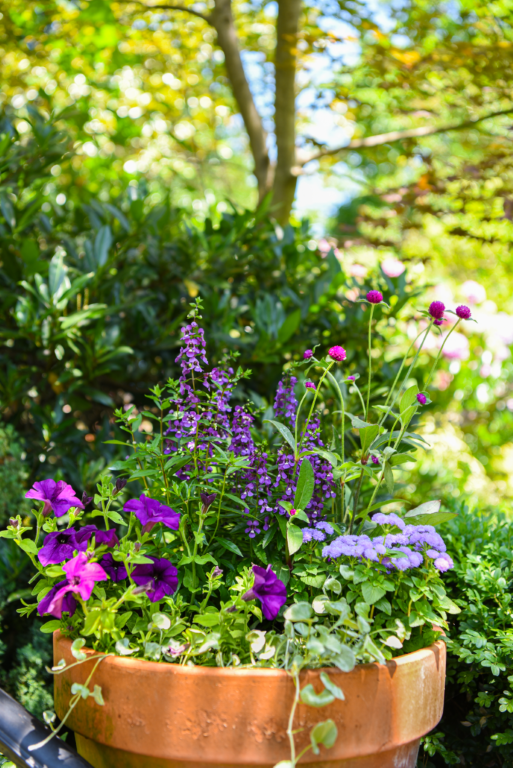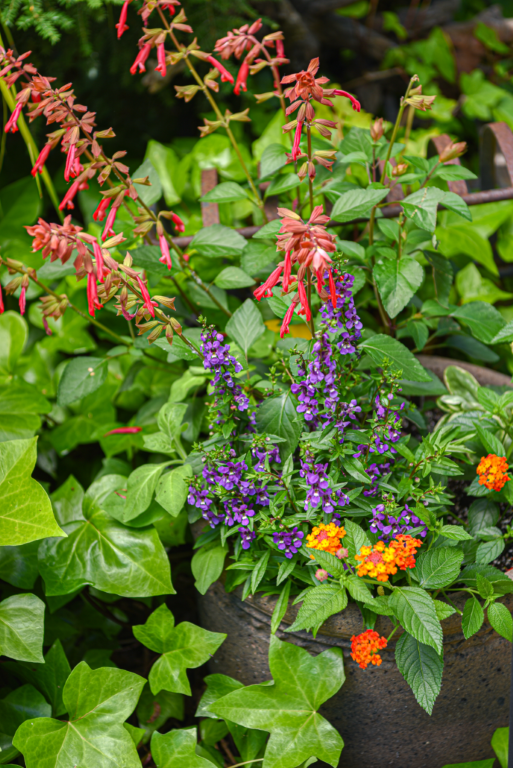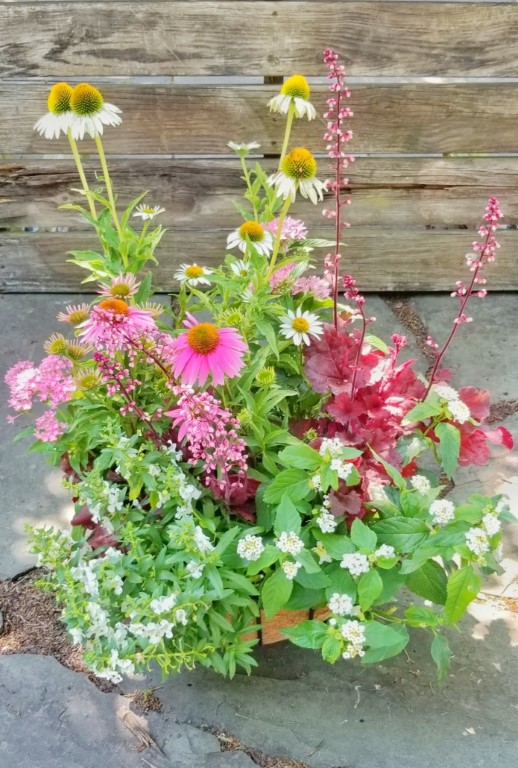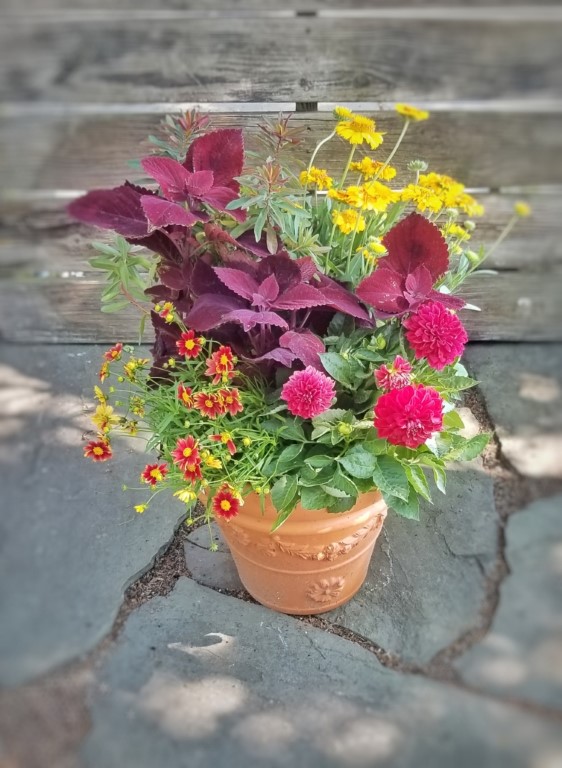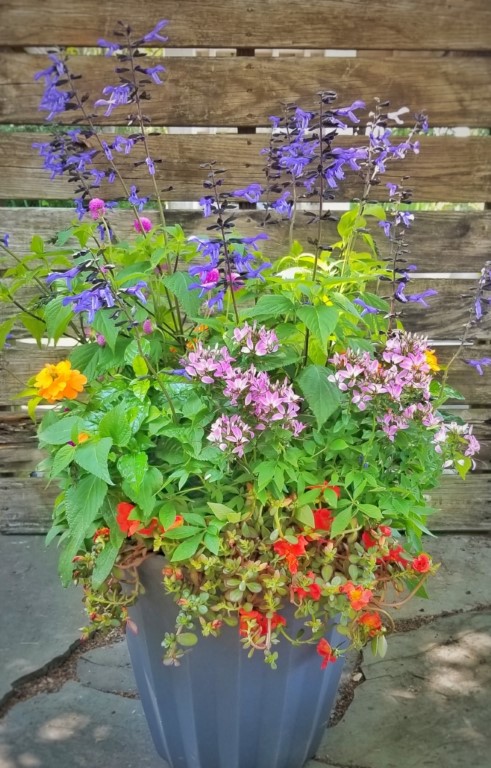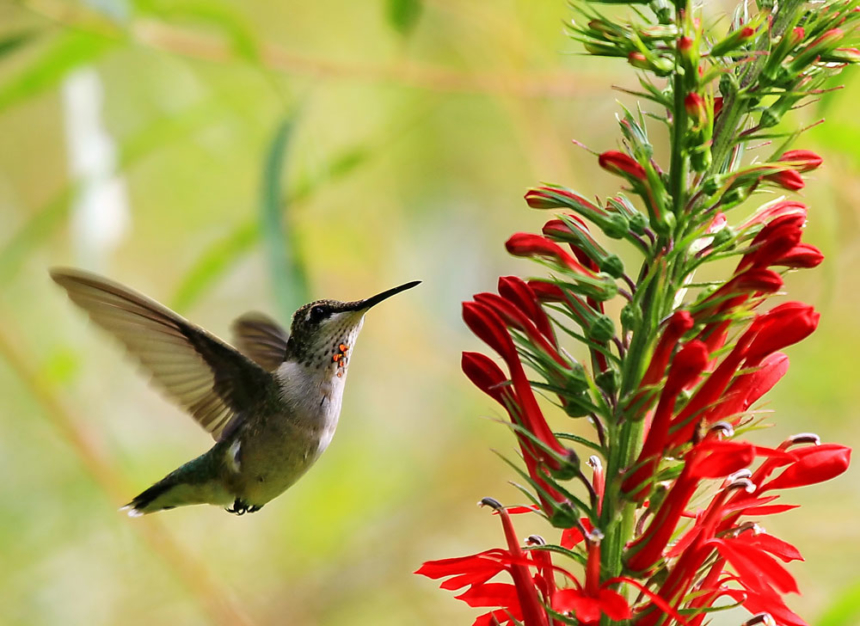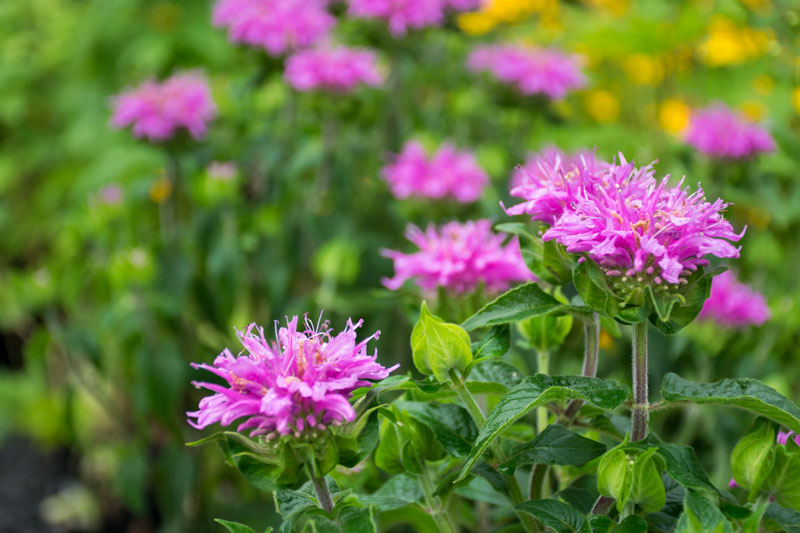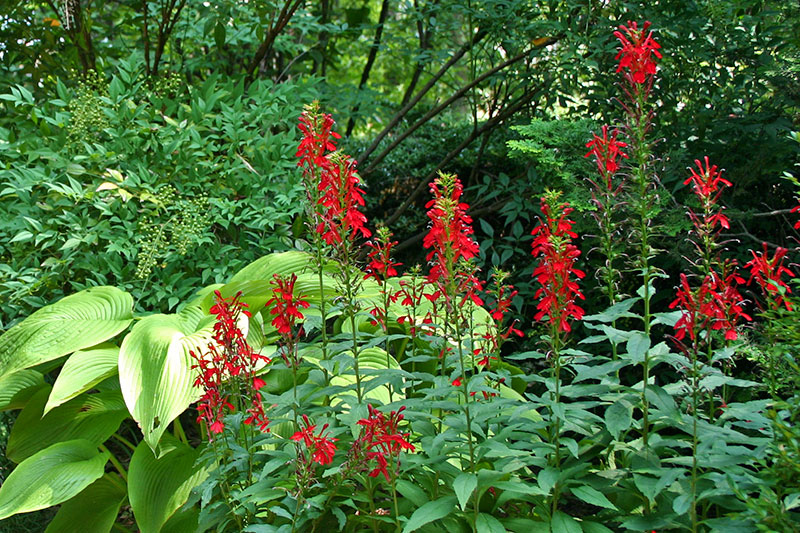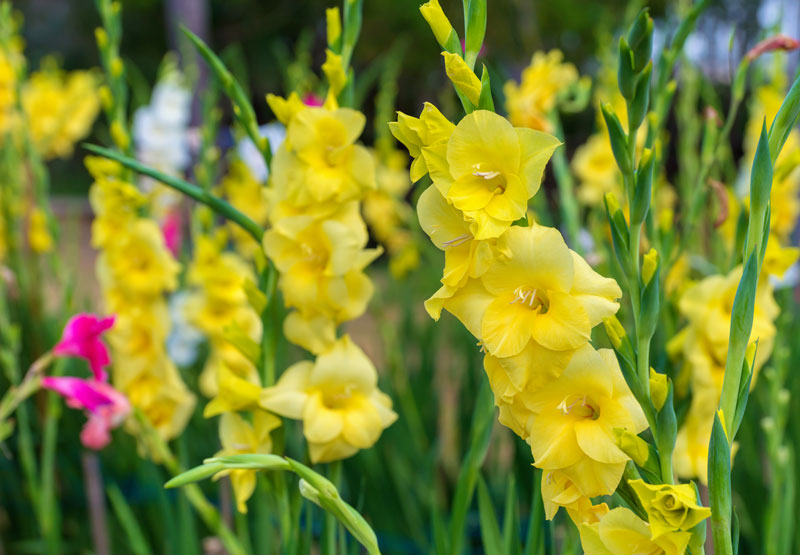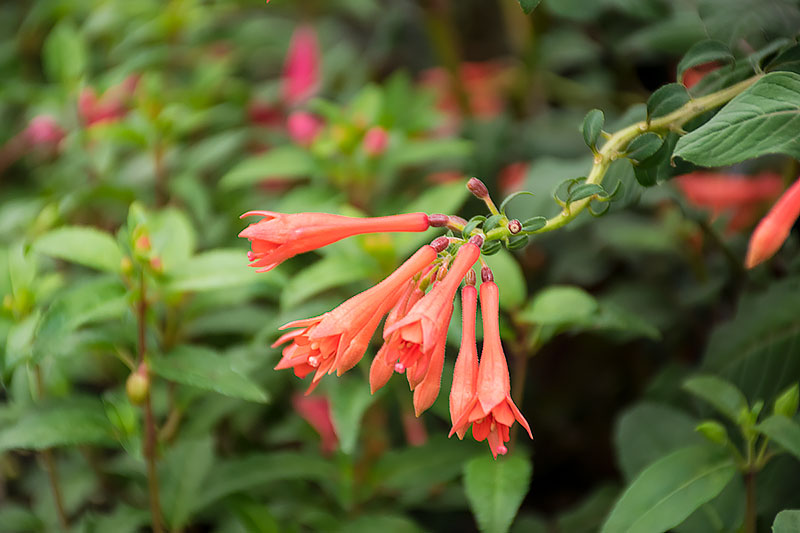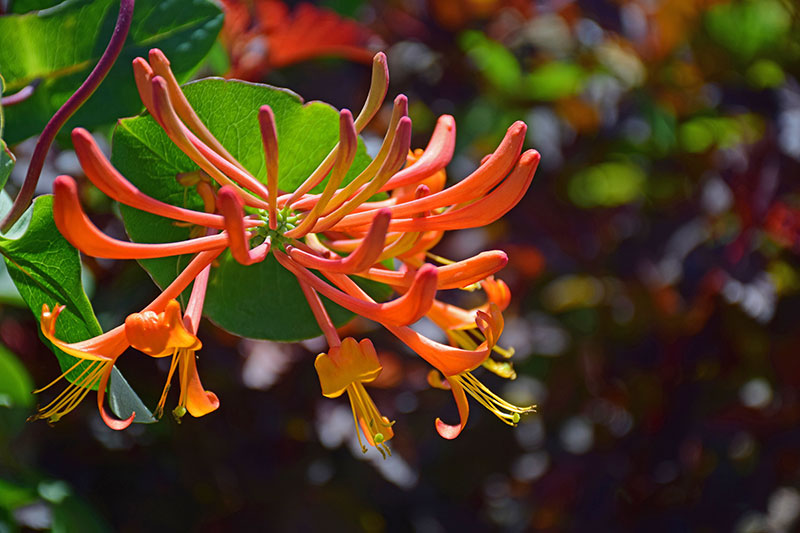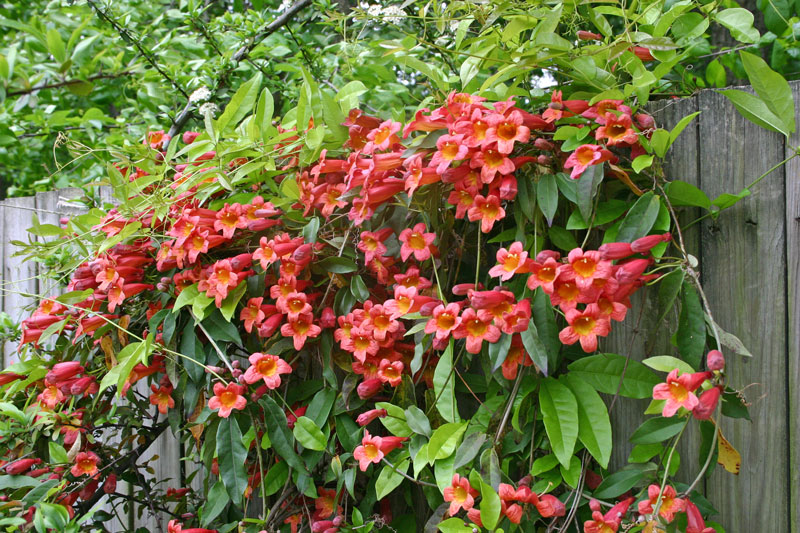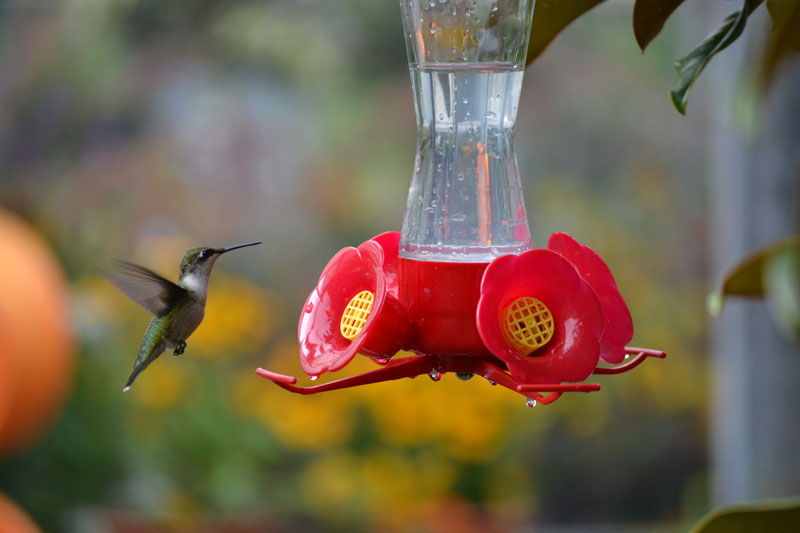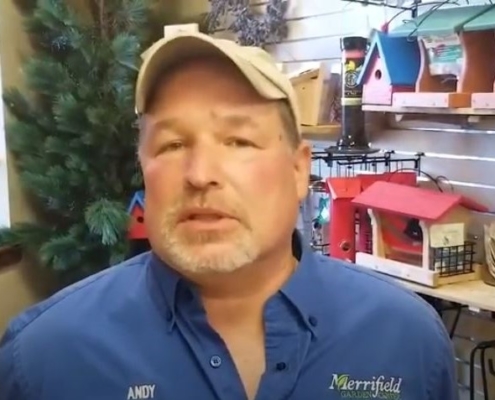Container Gardens for Butterflies and Hummingbirds
Summer is here, and so are the hummingbirds and butterflies we love to enjoy in our gardens. Even with a small space you can plant blooms in containers to encourage local butterflies and hummingbirds to stop in for a visit.
For more information on pollinators:
In this post, we will primarily discuss summer plants for pollinators that grow well in containers. If you want to learn more about supporting local birds, bees and butterflies, you may be interested in our posts on hosting native caterpillars, planting for pollinators year-round, or attracting hummingbirds.
This purple pollinator container garden features petunias, angelonia, ageratum and gomphrena (design by Peg Bier, Merrifield Plant and Design Specialist).
Selecting Plants for Your Container Garden
Butterflies and hummingbirds both eat nectar from flowers. Both hummingbirds and butterflies will be attracted to brightly colored flowers whose nectar has a high sugar content.
Butterflies prefer blooms with flat landing pads where they can easily land to sip nectar. Hummingbirds prefer blooms that are accessible by their long beak while still in flight. Every gardener will have their own favorites and plants that they swear by, but here are some popular favorites we all agree on for the summer:
Perennials
- Agastache
- Asclepias (Butterfly Weed)
- Coneflower
- Coreopsis
- Gaillardia
- Gaura
- Heuchera
Annuals
- Angelonia
- Begonia
- Calibrachoa
- Crossandra
- Cuphea
- Dahlia
- Fuschia
- Gomphrena
- Lantana
- Pentas
- Petunia
- Salvia
- Zinna
There are many plants to choose from, but you may find that your local hummingbirds and butterflies prefer certain types of flowers.
This pollinator container garden features salvia, angelonia and lantana (design by Peg Bier, Merrifield Plant and Design Specialist).
Container Combinations
When creating a pollinator container, your creativity is just about your only limit. While you will want to use mostly pollinator plants, it is perfectly fine to combine other plants you love into your containers as well. Here are some ideas to get you started!
Fresh Pink and White
This combination of pink and white flowers looks natural while maintaining a curated color combination of pink and white blooms. This fresh, vibrant container combines perennial coneflower and heuchera with annual lantana, angelonia and pentas.
Vibrant Red and Yellow
This container makes use of deep burgundy coleus to bring together the vibrant red and yellow blooms. For this combination, you will need perennial coreopsis and euphorbia with annual dahlia and coleus.
Bold Multicolor
This bright, bold container includes salvia, crossandra, gomphrena, cleome and portulaca.


